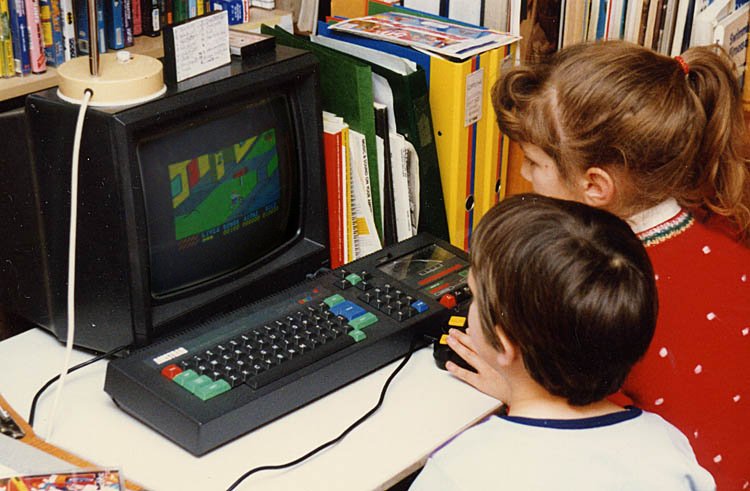
Eventually, you’ll reach a saturation point of errors, where you’re better off investing in a new computer altogether – sometimes a slow computer is an old computer that’s simply on its way out. However, before you reach that decision, here are a few tricks you can deploy on your own to speed up your PC, before spending any money, plus a few extra pieces of machinery you can invest in to improve its performance, rather than replacing it altogether.
Uninstall Programs
Uninstall all of the programs you never use. Many computers come installed with bloatware, or unwanted software that manufacturers stealthily include on your system without your knowledge. Odds are, you have a handful of games and other programs installed on your device, taking up memory and slowing you down on the sly.
Within Windows, go to the Control Panel, Programs, and then the Programs and Features tab. This is where it gets tedious. Scroll through every program on your computer and uninstall each of the extraneous ones, one at a time. It may be a little time-consuming, but it has the potential to dramatically improve your computer’s performance.
If you’re unsure as to what a particular program does or whether or not you should keep it, Should I Remove It? is a free app that rates each of your programs and can advise you on the issue. Simply search for the name of the program, once you’ve opened the app and it’ll give you the full run-down of its function and value. PC Decrapifier is another tool you can use for the same purpose.
Clean Out Your Temporary Files
Every day you perform tasks on your computer, and everyday your computer generates temporary files that pile up in its background and slow down its processes. Clearing out these files (which you’ll likely, never have any reason to access), and your web-browsing history and Internet cookies, will free up memory space and improve the overall speed of your computer.
Within Windows, go to This PC and search for “.tmp.” This should call up your Temporary files folder which you can delete and then further delete, by clearing out your Recycle Bin.
Here’s another little trade secret. Windows has its own built-in Disk Cleanup tool that combs your computer, for large, unnecessary files. Simply search for Accessories within Start. Go to System Tools and then, click on Disk Cleanup. That’ll do the trick, too!
As for your Internet search history, hunt around for the settings of your browser, usually designated by a gear icon. The History tab generally resides under the heading of “Privacy” or “Security” or even “History” out right. Simple check the box to clear your History and you’re all set!
Run a Disk Defrag
Again, for Windows users, within This PC, select Properties, Tools and, then Defragment Now. This will increase the efficiency by which your hard drive stores information. Lastly, double check to see whether or not your computer needs a physical dusting! You won’t be able to run any programs while the computer is defragmenting itself, so you might as well multitask and clean up the outside of your computer while you’re waiting for it to restart.
What About That Equipment We Mentioned, Up Top?
Are you ready to flush out a few bucks? Depending on what you use your computer for, you may have to invest in some new parts to improve its performance. Here are few parts you might need.
Extra RAM and Memory Cards
Extra RAM increases the memory capacity on your computer. A clear indicator of not having enough RAM is if your computer slows down every time you try and process large files, or it freezes while carrying out several different actions at once – even after you’ve cleared out temporary files, etc.
How much extra memory do you need? The average user could stand to benefit from an increase in 3 or 4GB. If you use multiple programs at once, or heavy, memory-intensive apps like Photoshop, you should consider 6 or 8GB of RAM, but that option really is only for the user that engages in a high volume and frequent audio, video, or image editing. Small, external memory cards can also help to alleviate this problem by freeing up space. Just make sure you don’t misplace your memory cards!
… or a Solid State Drive
Interms of speed, one of the best options at your disposal is to invest in Solid State Drive or SSD. This will improve the speed at which your applications load and programs run, but it won’t affect the load time of your Internet-browsing. If you only use a few programs on your computer at any given time, it’s probably not worth the investment, as SSDs run around $200. That being said, they have no moving parts, are quiet, durable, extremely fast, and improve the battery life of laptops.
You can upgrade these pieces of hardware independently of one another, but if you upgrade one and leave the others, old and slow, you may find that your computer is still performing below standard. A good rule of thumb is not to waste your money on a $200 SSD if your computer is in its death throes.
That being said, if you’re still experiencing issues or are unsure as to the condition of your computer’s parts, you may want to have it checked out by a professional to determine if anything is outdated and whether or not a total replacement might be your most cost-effective option in the long run.
Still have more questions? For more information on the technology pertaiing to you home visit our FAQ page, Resource Center or send us a quick chat! We’re happy to help.

Comments are closed.